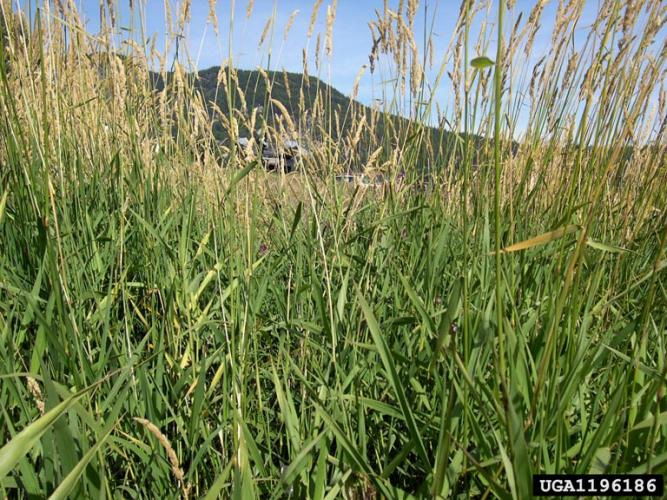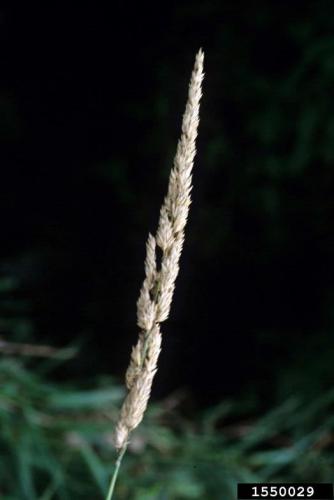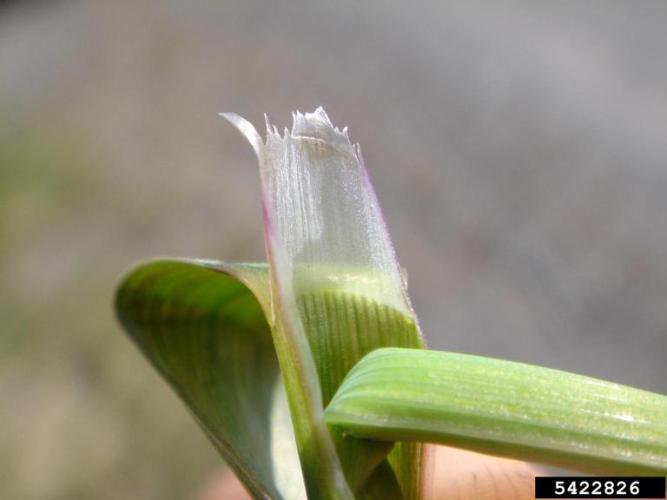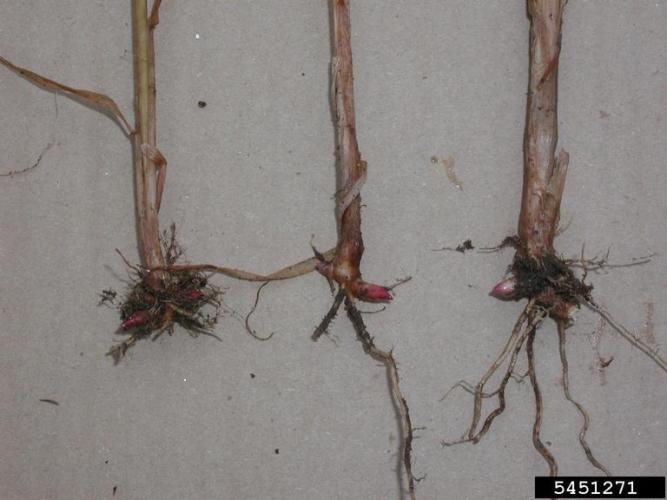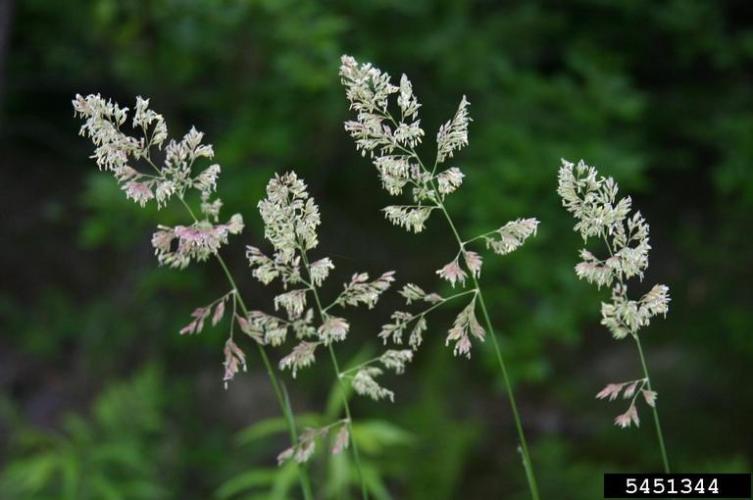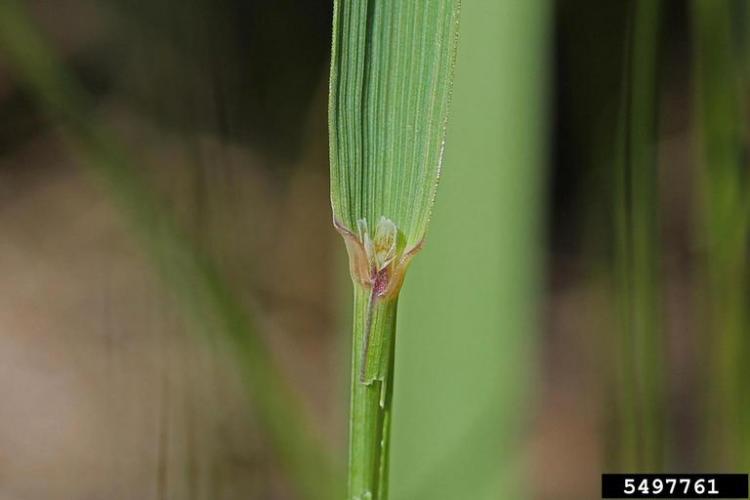Reed canary grass
Identification
Appearance
Phalaris arundinacea is a cool-season perennial grass that grows to 6 feet tall. Reed canary grass is variable in morphology, so characteristics may depend upon the habitat.
Foliage
Leaf blades are flat, 1-4 feet long, up to 0.75 inches wide, glabrous and taper gradually. The ligule is membranous (transparent) and long.
Flowers
The spreading flower/seed heads arise from hairless stems and can be green, purple, or brown in color and usually 3-6 inches in length. Flowering occurs from May to July.
Fruit
The inflorescence color changes from green to purplish to tan as the seeds mature. There are both sterile and fertile lemmas.
Biology
ECOLOGICAL THREAT
Reed canary grass forms large, monotypic stands that harbor few other plant species and are little use to most native wildlife. It constricts waterways by promoting silt deposition, yet may also encourage erosion of soil beneath its dense mats in places where water flows rapidly. Overtime, it builds up a tremendous seed bank that will erupt when sites are treated for this invasive.
ORIGIN
Both Eurasian and native ecotypes [genetically distinct populations] of reed canary grass are thought to exist in the United States. Invasive populations may be descendants of non-native cultivars or ecotypes, although this is not clear. Aggressive strains have been planted throughout the United States since the 1800s for forage and erosion control. Reed canary grass has become invasive or problematic in New England and across North America.
HABITAT
Wetland margins, meadows, fields, riverbanks, shoreland, disturbed areas
LIFE CYCLE
Reed canary grass is large and coarse, reaching up to nine feet in height. Its flat, bluegreen leaves are roughly textured. In June and July, large flower plumes are produced, which are green with a purplish tinge, eventually becoming light tan in color. The stems do not remain standing though the winter.
Vermont Distribution
How You Can Help
Citations
PHOTO CREDITS
Reed Canarygrass, UGA1196186, Michael Shephard, USDA Forest Service, CC 3.0
Flower head, 5451344, Leslie J. Mehrhoff, University of Connecticut, CC 3.0
Seed head, 1550029, John Cardina, The Ohio State University, CC Non-com 3.0
Rhizomes, 5451271, Leslie J. Mehrhoff, University of Connecticut, CC 3.0
Bluejointed grass, 5497761, Rob Routledge, Sault College, CC 3.0
INFORMATION CREDIT
Pennsylvania DCNR, Reed Canary grass
